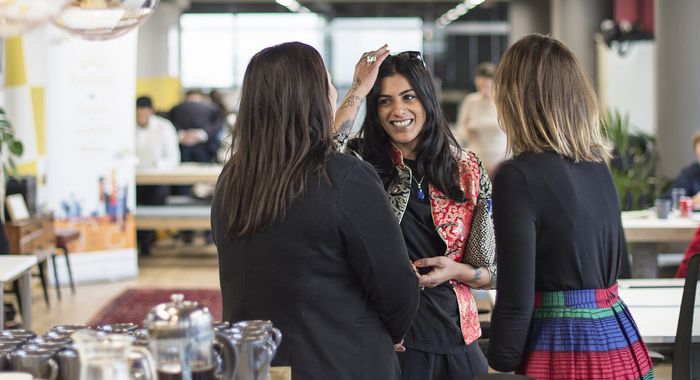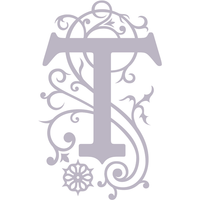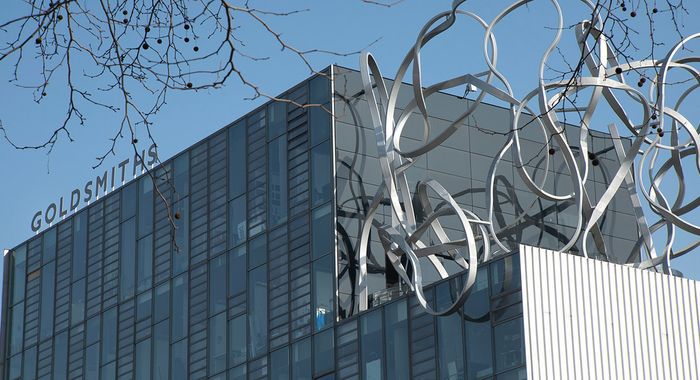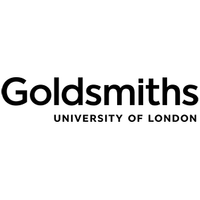The Trampery is a social enterprise, combining work, social and resident spaces at Fish Island Village (FIV) in Hackney Wick, East London. The research methodology began with an interview with Patrick Scally, the House Manager at The Trampery Fish Island Village. This was further supported through on-site observations and analysis of organisational materials and articles regarding the enterprise.
The Trampery is a physical manifestation of Bourdieu's theory of 'Field' and 'Habitus', developing spaces around London encouraging innovation, collaboration and the reconceptualising of value within a business. Bourdieu's notion of the field follows the principle that every person is located in different 'spaces' or fields and interact within those differently (Townley, Grewar and Winter, 2013). Every field is embedded in other fields; which all interact with each other. This applies to The Trampery because the FIfV Campusexists within The Trampery's own six campus ecosystem, but also has small businesses which themselves interact as a campus for the field of sustainable fashion.
Moreover, Bourdieu highlighted the importance of the habitus toward an individual's behaviour within a specific field (Townley, Grewar and Winter, 2013). The habitus explains how and why the individual adopts a specific posture within a field (ibid), implying the relationships built. The individual's behaviour depends on their life experiences, consequently, Townley, Grewar and Winter, 2013 explained the habitus works as a tool to optimise an individual's actions within a field. For instance, Charles Armstrong; Trampery Founder, before setting up of The Trampery, created house studio spaces for designers. Although this space had to close because of the rent increase of the area, Charles learned from this experience, deciding to build The Trampery's sites in areas where the rent is more affordable (Vogue business, 2019). This reaction results from Charles's habitus as Charles Armstrong learned from an experience that influenced his future decisions.
1. Social Enterprise and Reconceptualising Value
The Trampery is a social enterprise, which they state, "means they exist to provide the greatest possible benefit for society" (The Trampery, 2020). In other words, instead of focusing on the profit, the enterprise focuses on the positive social impact The Trampery can have on society. This is evident as The Trampery's profits are put back into expanding the business (Guardian, 2013). To achieve their social goals, they support creative entrepreneurs' ambitions: "providing shared workspaces and support programmes" (The Trampery, 2020), promote collaboration and active citizenship, and lastly be a source of "social mobility through supporting entrepreneurs in deprived communities" (Ibid). According to Patrick Scally, an objective of The Trampery is to take a holistic approach to urban development, altering the value of development projects away from a financial bottom line, to considering individual well-being and community, providing community spaces and cafe within the open-access campus.
The Trampery's approach highlights how making money might not be the only necessary thing that an entrepreneur should consider before setting up their business. Bourdieusian social enterprises represent the importance of social and cultural capital in the creation of economic capital or 'successful business', and secondly, the philanthropic nature of them illustrates the importance of economic capital in working to increase social and cultural capital or societal good. Example being, in 2021, The Trampery is embarking on an educational outreach programme, utilising their capital to support young people in education from a deprived background, offering them work experience in their membered start-ups as well financial support in the form of free community studios and co-working spaces. To evaluate, solving socio-political issues that society is facing such as social mobility through conceptualising Bourdieu's understanding value might be a potential solution to create better business practice. As Dart (2004, p.414), states 'by being a social enterprise organisation such as The Trampery you are at the forefront of innovation concerning business models'.
A Critique of The Trampery's business model is whether an organisation such as The Trampery is genuinely a social enterprise. For example, while they reinvest all profits and so are inherently a social enterprise, they can also be having a negative indirect consequence of being proponents of gentrification. This seems feasible, as Bourdieu states that "profits in one area are necessarily paid for by costs in another" (1986, p. 20). Therefore, The Trampery through the increasing land values in developing neighbourhoods leads to "displacement directly and indirectly as the local area changes so that existing residents no longer feel it is their place" (Watt, 2013 p. 114). Watt 2013, in studying nearby to FIV Olympic Park argues that gentrification is exponentially increasing in East London. Watt argues that this is due to the "collective social action of clusters of middle-class gentrifies" (ibid p. 101). However, also "large-scale capitalist processes of new-build developments connected to rounds of regeneration" (Ibid), this that The Trampery is contributing to. By capitalising on their residential spaces curated for a high-end living for creative professionals, The Trampery facilitates both the 'new-build development' as well as the 'middle-class gentrifies' which they market such residences too. Upon questioning Patrick Scally on the matter of gentrification, he insisted on the inevitability of gentrification. However, he argued that this is why The Trampery exists as a social enterprise against the wave of “money-hungry” developments, as Armstrong reiterates "We're not estate agents or property developers, we are not in it to fill up space" (The Guardian, 2013). Although The Trampery may concede to indirect consequences on the property prices, their business model of a social enterprise does take an ethical and sustainable alternative which councils can support and thus avoid venture capital entering the market. The Trampery achieves this through valuing social mobility supporting the local community to be a part of the growth rather than to be pushed away by gentrification.
2. 'Innovation District'. Building Relationships and Collective Capital
The Trampery additionally provides every required capital to help its members to be as successful as possible in their careers. To achieve this, The Tramperyco-develops 'innovation districts'. This can be seen in Bourdieuian terms as the field one that combines "workspace, housing and lifestyle facilities" (The Trampery Website Accessed 28/01/20). This enables the members to access the social capital within the shared space this through as Bourdieu sees 'the aggregate of the actual or potential resources within institutionalised relationships of mutual acquaintance and recognition' (Bourdieu, 1986, p. 21). Furthermore, in order to facilitate successful entrepreneurs, the combination of different types of capitals; social, economic and cultural is primordial (Townley, Grewar and Winter, 2013).
Consequently, The Trampery cultivates this by being an autonomous field that works on its own, while fulfilling its members capital needs through building relations and collective capital. In achieving this, their business model combines:
1. People: In which all organisations have common interests and thus a willingness to network with each other.
2. Place: Enabling a workplace and sharing of ideas within proximity, enhancing productivity and thus indirectly creating economic capital.
3. Process: Having universal principles of co-operation. A member of one campus can increase their knowledge in a different sector, thus increasing their cultural capital. This facilitated through 'cross-campus networking and outreach programmes and collaborations' (Scally).
These elements come together to maximise capital growth and innovation for the members and The Trampery. The effort put into building social capital differentiates away from co-working spaces such as We-Work which merely are a service of desk renting, creating only 'place', which yes is necessary but not sufficient. In Contrast, The Trampery take a more holistic business model than many of its competitors, embodying Bourdieusian theory. In evaluation, Charles Armstrong argues "So much of what they (members) like is networking, and the cross-fertilisation of ideas" (Guardian 2013) and therefore through this, The Trampery facilitates the members' ability to leverage the collective capitals co-created through a relaxed habitus centred around relationships, to better produce innovative work. To achieve this "The Trampery's clients are encouraged to discuss their projects with each other over coffee and home-made cake at the in-house cafe or beers on regular nights out" (The Guardian, 2013).
This collective capital can be further enhanced through ‘symbolic capital; prestige and credibility within the field’ (Bourdieu, 1993). This is developed through affiliate marketing and cultural consecration. The Trampery as leverages this, as it offers members cultural capital through access to industry partners such as the London College of Fashion, The City of London Corporation and the nearby site of Here East - the new headquarters for the British Council and V&A. Secondly, it is facilitated through The Trampery's 'vetted membership' process and success of the member start-ups developing a 'monopoly of legitimate discourse' (Negus and Pickering 2006, p. 86) regarding innovation. This exclusivity has enabled the commodification of prestige and credibility, creating a perception of quality, and thus cultural capital not merely for the members but for The Trampery as a facilitator of innovation. For example, Petit Pli a member at FIV, was recently validated as innovative, receiving the James Dyson Award 2017 and H&M Global Change Award 2018. Both awards are highly respected within the field of sustainable fashion. Therefore, The Tramperyby having a start-up like Petit Pli as member uses strategic affiliation alignment to evidence their validation and credibility of 'legitimate Discourse'. This amassed cultural capital can thus be converted, enabling growth, through the notions of collective capital.
The Trampery is a successful practical illustration of the importance of Bourdeiesian theory in understanding the field and habitus of the urban creative ecosystem. From how they reconsidered the value of capital, away from mere economic assets to the human-centred approach to development, to the ethical issues regarding their closed community processes and indirect gentrification implications, Bourdieu's theory is a useful framework to evaluate social enterprise and the wave of 'co-working' spaces created.
Bourdieu, Pierre. 1986. “The Forms of Capital.” Pp. 241-258 in Handbook of Theory and Research for the Sociology of Education, edited by J. G. Richardson. New York: Greenwood Press.
Bourdieu, P.F. and Bourdieu, P., 1993. The field of cultural production: Essays on art and literature. Columbia University Press.
Townley, B., Grewar, M. A., & Winter, J. (2013). Thinking in capital mode. ESRC Research Capacity Building Clusters.
Watt, P., 2013. ‘It's not for us’ Regeneration, the 2012 Olympics and the gentrification of East London. City, 17(1), pp.99-118.
Scally, Patrick. Interview Conducted on-site at The Trampery, Fish Island Village : 22nd January 2020





